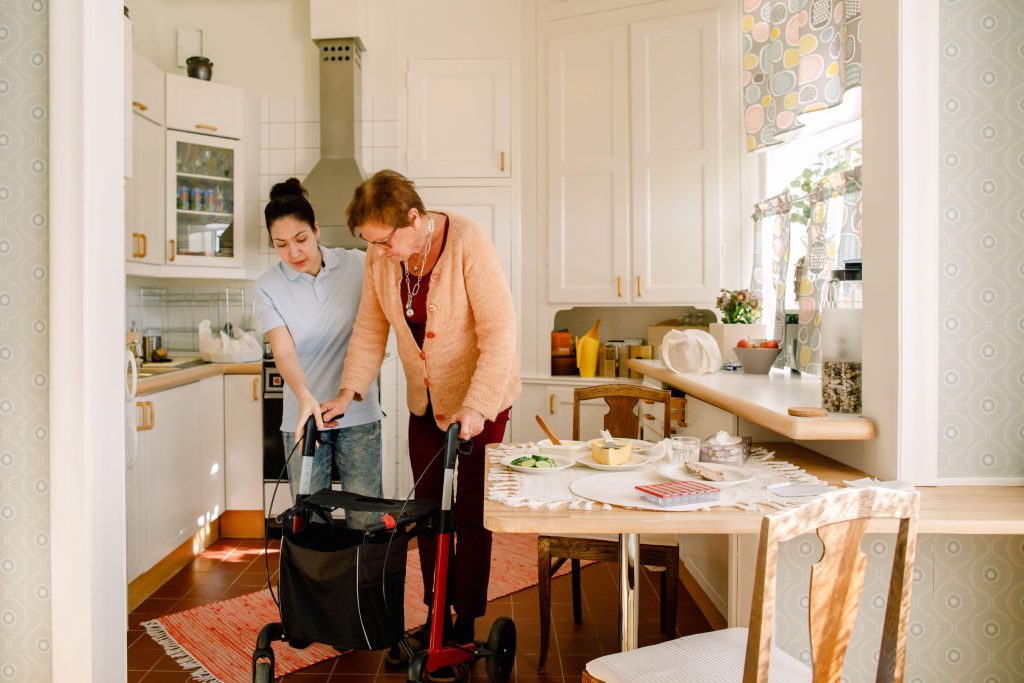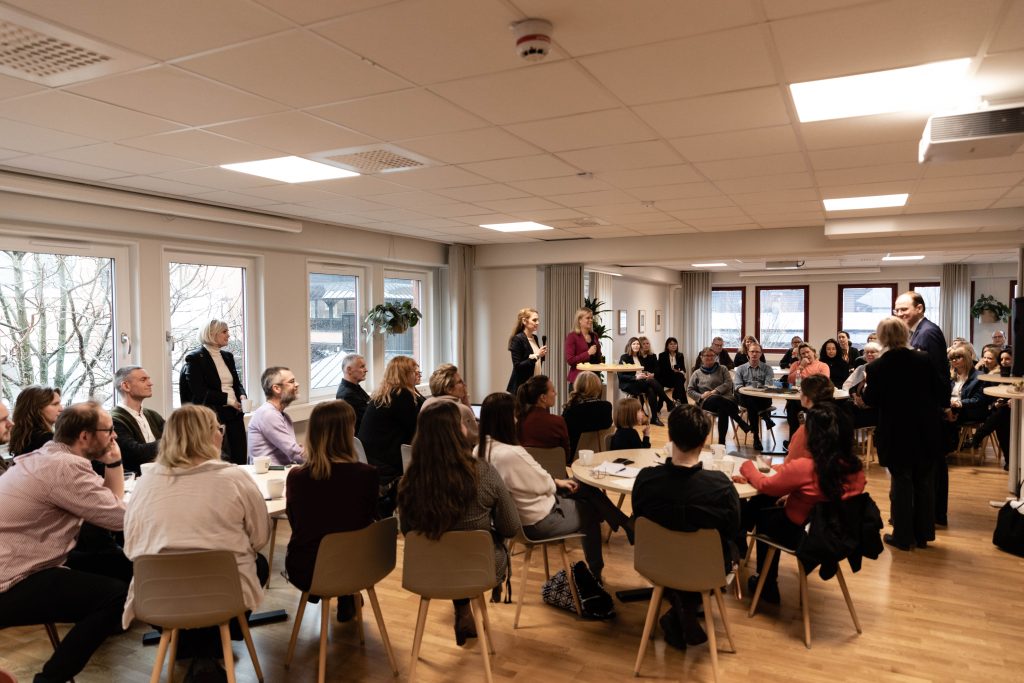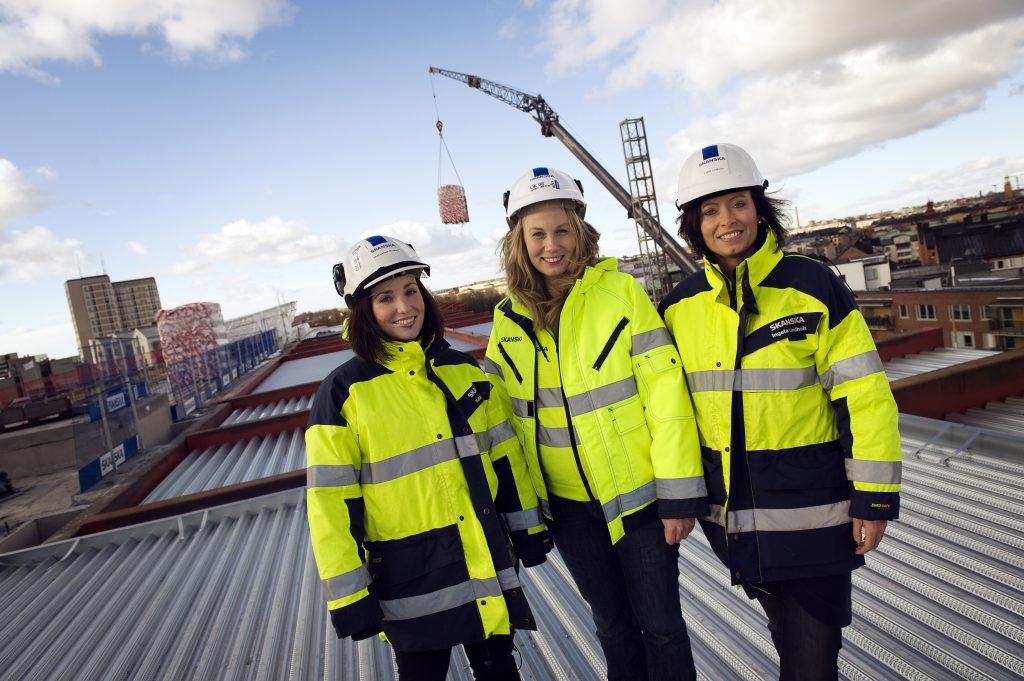
Narrowing the Gender Gap in Sweden
Sweden ranks 1st globally for the Gender Gap indicator in the 2023 Chandler Good Government Index, moving up six places despite having no major gender equality programmes over the past year. Rather, this achievement has been borne on the back of reform efforts with the support of a national consensus built over several decades. We speak with Lena Ag, the Director General of the Swedish Gender Equality Agency to understand Sweden’s long-term strategy in closing the gender gap.
Director General at the Swedish Gender Equality Agency, Lena Ag attributed the recent rise in Sweden’s ranking for the Gender Gap indicator to the result of its long-term efforts toward gender equality rather than any major political reforms over the past year. As a nation, Sweden has been actively working politically for a gender-equal society since the 1970s. This culminated in the passing of the Gender Equality Act in 1979 which promotes equal rights for both sexes in work, employment, working conditions and opportunities for human capital development. It also made gender discrimination in the workplace illegal. While the law is gender-neutral, it is aimed primarily at improving women’s conditions in work environments.
The ultimate aim of Swedish gender equality policies is for women and men to have the same opportunities, rights and responsibilities in all areas of life. Gender mainstreaming has been a core strategy since 1994, which means that decisions in all policy areas and at all levels must be made with a gender equality perspective. The Swedish Discrimination Act in 2009 demands that employers not only actively promote equality between men and women, but also take measures against harassment.
The bar was raised further in 2018 when the Swedish Gender Equality Agency (SGEA) was founded under the Ministry of Employment. Right away the agency was tasked to render support to all other government agencies, municipalities, county councils, regions and civil society to co-opt and integrate with a gender perspective in all aspects of their operations through the Gender Mainstreaming in Government Agencies (GMGA) programme. An important part of SGEA’s mandate is supporting implementation and monitoring Sweden’s national ten-year strategy to prevent men’s violence against women.
The SGEA also works on policy analysis and follow-up of progress with universities on gender mainstreaming objectives, and facilitates international exchange and cooperation. It also provides government grants to women’s mobilisation, gender equality projects and programmes preventing men’s violence against women in Sweden.
Gender Equality Has Broad Political and Popular Consensus Among Swedes
Gender equality goals are generally shared by all political parties in Sweden, despite different opinions concerning how far-reaching the political measures could be applied. For instance, to what extent should policy determine who in the family stays home with the children and makes use of parental leave insurance? Nonetheless, the increased equality in the sharing of childcare and household chores among partners has led to greater labour market participation for women and equality on both the employment and healthcare fronts as a whole.

Over time the focus on economic participation and a gender-equal education system has paid off, even if there are still issues to be addressed. The labour market, for instance, is still very gender segregated as men and women continue to choose gender-traditional occupations. Hence, a disparity in pay persists due to differences in profession, sector, position, work experience, age, and other gender-related issues. In 2021, women’s average monthly salaries in Sweden were 90.1% of men’s.
The business sector remains male-dominated. According to Statistics Sweden’s bi-annual report on gender equality from 2022: only 10% of the companies listed on the Stockholm Stock Exchange had women chairpersons; women account for 36% of board members; and only 13% of the companies had female CEOs.
Director General Ag says there is still a lot that can be done to encourage both men and women to choose “non-traditionally” when it comes to their educational choices, which will influence their careers in terms of what occupations they will take up.
The Swedish view of gender equality is that it is not only about human rights. It is also a matter of socio-economic efficiency, and how resources are deployed to improve human capital and cope with potential areas of labour shortages. For instance, the healthcare and education sectors need to recruit more personnel in the coming years, and will benefit from having labour from both genders.

Gender equality measures can help dismantle the barriers towards professions that are either traditionally male or female-dominated. The development of the technology sector for instance is an area where more women can be encouraged to choose a career path by pursuing a STEM (science, technology, engineering, mathematics) education.
One reason that there is a strong consensus towards gender equality – both among Swedish political parties and the population as a whole – is a gender-equal society is an important objective for our society. This consensus drives the long-term commitment to the work towards gender equality from political leadership, which also is a factor behind the progress of Sweden’s national gender agenda.
It helps that most Swedes are of the view that they live in an equal society. A recent study by the SGEA showed that 79% of women and 87% of men see themselves living in a gender-equal society. There have, however, been recent signs of an increasing degree of polarisation between younger men and women, with young men harbouring slightly more negative attitudes towards the need for further policy measures aimed at gender equality.
Impact of the COVID-19 Pandemic On Gender Equality
Like the rest of the world, the COVID-19 pandemic had a negative impact on gender equality. Women in general were harder hit by issues relating to job security and income levels. This is true even in sectors where they have a higher share of the headcount compared to those dominated by men. That disparity is seen in the healthcare sector, where most of the workforce are women, who often found themselves on the frontlines fighting the pandemic.
The health effects for men and women were also different, with more men dying from COVID-19. Men were also less inclined to change their behaviour in response to the coronavirus crisis, such as following health-related advice and recommendations from the authorities.

Women were more likely to look after relatives and care for older people and those with disabilities. The incidence of mental illness is higher among women than men of working age or older. Mental illness is also more prevalent among young women than men of the same age, but men commit suicide to a larger extent than women.
Policy measures such as the pandemic support and subsidies employed to mitigate the ill effects on the economy also tended to be skewed towards male-dominated sectors. Based on these findings, there is evidently a strong need to reassess some of the pandemic measures and explore ways to better integrate gender equality in Sweden’s responses to future crises.
Swedish Gender Mainstreaming Mechanisms
The Swedish institutional structure, with its self-acting agencies that are not directly controlled by politicians in their daily business, has been key to the success of the progressive march toward gender equality.
Sweden’s overall strategies to achieve gender equality involve all government agencies and institutes of higher education. The robustness of the approach is based on the fact that the agencies carry out the measures that are most suited to attain gender equality themselves, and within their areas and scope of responsibility and governance.
The operating perspective is that the impact of gender equality initiatives will be greater if properly applied by an agency themselves, rather than having prescribed measures imposed by external actors. That is because gender mainstreaming programmes adopt a “soft” governance approach; one that relies strongly on the commitment of the organisations handling the mainstreaming processes.
It is especially vital that senior management within these organisations are committed to the common objectives. Another challenge is to develop and maintain a long-term focus since such changes will not happen overnight. Success is predicated on the persistence of the work needed to address the relevant issues within the various agencies.

Role of Swedish Gender Equality Agency
The SGEA is not subject to any direct political influence. For instance, the minister responsible for the agency cannot tell the agency how to decide on a specific issue. Hence, the SGEA is able to stay objective, offering its input, recommendations and support for the implementation of various policy measures. Sweden has an institutional structure, with fairly small ministries with different kinds of agencies to help them in the work for implementing policy. If the SGEA was set up in other countries, it is likely that it would have been part of a ministry instead of a separate organisation.
The SGEA provides assistance in areas such as raising awareness, developing the methodology and implementation of programmes, coordinating gender mainstreaming efforts, as well as monitoring developments and progress. The organisation is not directly responsible for achieving the changes per se. It reports to the government that will take the necessary steps to hold the other agencies accountable for their work on gender equality.
While it has no formal power to coerce the actors into taking the necessary measures and delivering outcomes, the SGEA instead relies on the trust that other ministries and agencies will treat their assignments from the government seriously. It is also vital that all actors not only have clear assignments from the government but also contribute to coordination efforts. Otherwise, it will be difficult for the SGEA to be the driver of change.
The SGEA’s support includes the formulation of training programmes that are evidence-based and rooted in statistics and research work that provides an important foundation for transitions to take place.
It is also important that the programmes are tailored toward target groups with the right mix of individuals, while taking into consideration their backgrounds and job roles. The training programmes are also designed to include workshop participation, discussions and the sharing of experiences with examples and case studies from other agencies.

In practice, gender mainstreaming means that agencies should look into their own areas of operations and analyse how each area or aspect can nurture the conditions for gender equality, and eventually contribute to Sweden’s overarching gender policy objectives.
That would mean making a thorough analysis of data on activities pertaining to gender. However, if the data is not available, the SGEA conducts the necessary surveys. The agency works closely with Statistics Sweden, the government’s central statistics bureau, to widen the scope and availability of gender statistics to help them identify and parlay suitable action plans to improve gender focus.
While the SGEA supports the gender mainstreaming process all along the way, the responsibility for the work is solely on the other agencies. The government entities we work with must conduct the necessary analyses to identify gender-related issues, and develop and adopt the methods for monitoring and evaluating of their activities.
The agency also provides the methodological frameworks and guiding documents, training and means for cooperation, as well as exchanges of experience between agencies. Each agency is responsible for its own tasks, the SGEA, which is currently staffed by 130 personnel, does not get involved in an agency’s work. The onus on gender mainstreaming lies with each government agency.
When asked how her experience has enabled her work at the agency, Director General Ag points to how her career brought her a deeper understanding of the time and nature of political change. “My background has been invaluable in order to understand how transformative change is made in a society from grassroots mobilisation to actual political policymaking,” she says. “The continued progress in gender equality in Sweden is ultimately the result of a long political struggle and hard work from a strong civil society, particularly the women’s movement, generating pressure on the political level to deliver political reforms.”
The article is written from interview responses from Lena Ag, the Director General of the Swedish Gender Equality Agency (SGEA) and information from the SGEA.

Lena Ag
Director General at the Swedish Gender Equality Agency (SGEA)
Lena Ag is the first Director General of the Swedish Gender Equality Agency since 2018. She has dedicated her professional life to issues regarding gender equality, peacekeeping processes and human development, domestically and internationally.
More Stories


Global Influence & Reputation Country Snapshot: Türkiye

